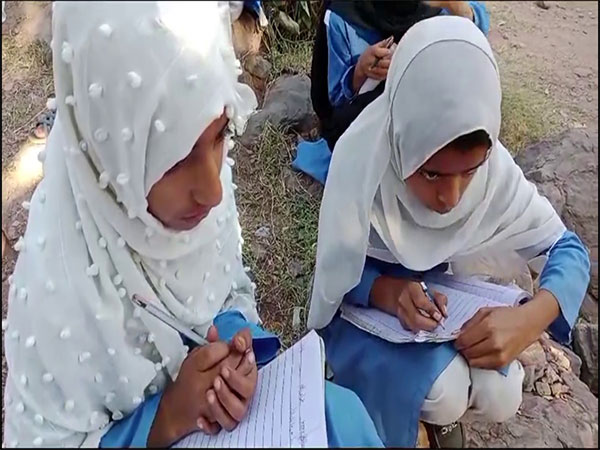Chinari [PoJK], October 14 (ANI): The 2005 earthquake in Pakistan-occupied Jammu and Kashmir had devastating effects, especially on the education sector. Many students lost their lives, and numerous educational institutions suffered extensive damage. nearly two decades later, many school buildings remain unreconstructed, leaving students without proper facilities.
In a remote village near Chinari City, a local girls’ school employee, Ghulam, expressed his disappointment over the ongoing issues.
Standing in front of the school, he stated, “Our school was damaged in the 2005 earthquake, resulting in the loss of two children and injuries to fifteen others. We have attempted to rebuild the school, but the children continue to face difficulties in learning. Despite our efforts to engage with various institutions, it has been 19 years, and the school remains incomplete.”
He further added, “In winter, it snows heavily, and there are no benches for the children. The cold makes it incredibly difficult for them to study. There are no other schools in the area, and many families lack the means to send their daughters to schools in other regions. Traveling in this weather is challenging.”
Ghulam appealed to the government to provide facilities for the students.
He said, “I request that some facilities be provided so that the children can continue their education.”
A female teacher at the school also shared her concerns and said that they struggle during winters to continue the studies.
“We only have a single roof over our heads, which is barely enough for the students to continue their studies. If anyone else were in my position, they might not have the strength to carry on. In winter, we struggle with the cold, and the condition of the roads is terrible,” she said.
The education system in PoJK faces numerous challenges that hinder its effectiveness. Infrastructure is often inadequate, with many schools lacking basic facilities such as clean water, electricity, and proper classrooms. Teacher shortages and a lack of trained educators further exacerbate the problem, leading to large class sizes and diminished learning outcomes. The curriculum is frequently outdated and does not adequately prepare students for the demands of the modern job market. Additionally, socio-economic factors and political instability contribute to high dropout rates and limited access to education, particularly for girls. These issues create significant barriers to providing quality education, ultimately impacting the region’s development and future prospects. (ANI)
Disclaimer: This story is auto-generated from a syndicated feed of ANI; only the image & headline may have been reworked by News Services Division of World News Network Inc Ltd and Palghar News and Pune News and World News
HINDI, MARATHI, GUJARATI, TAMIL, TELUGU, BENGALI, KANNADA, ORIYA, PUNJABI, URDU, MALAYALAM
For more details and packages











